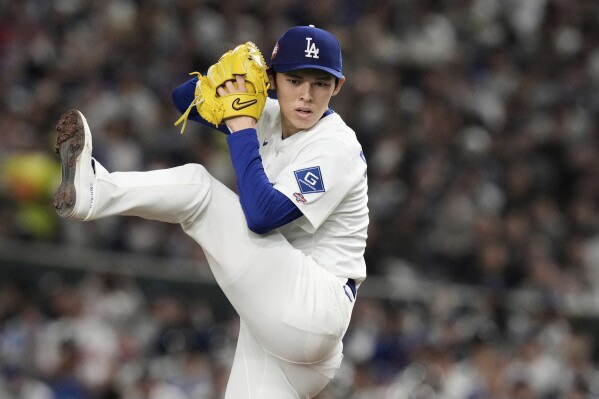Over the last five years, the MLB has seen a massive increase in splitter usage among pitchers, both starters and relievers. People have quickly begun to see the splitter as one of the most effective off-speed pitch offerings when used properly. Since 2021, the MLB has seen splitter usage increase immensely over the last few years with almost a full percent increase in splitter usage over the last 4 years. Going from 2.2% to 3.1% may not seem like much, but that is a very significant increase for an off-speed pitch like that.
In the 80s and 90s, splitters were very popular offerings with guys like Randy Johnson, Roger Clemens, and Bruce Sutter all using them effectively throughout their careers. But soon, the pitch became taboo, as concerns of elbow strain arose and concerns of elbow injury caused many to use different off-speed pitches. But recently, there has been an uptick in splitter usage and it has proven to be a great strikeout pitch with a 32% strikeout rate last season. Today I take a look at why the pitch has gotten more usage and why its popularity will continue to rise.
Its an effective pitch that can be more effective than a regular changeup
Similar to a changeup, the splitter is designed to look like your fastball when it comes out of the pitchers hand, but dips as it gets closer to the plate. The decreased speed and spin rate causes the ball to dive rather than carry through the zone. The mix of a fastball and a splitter gives you two pitches that play off each other well and throws off a hitters timing at the plate.
Many people report that the splitter is easier for them to command than a typical changeup as the grip is similar to other offerings. The typical changeup requires adding the ring finger to the top of the ball, something many pitchers struggle to get comfortable with, and a circle changeup grip makes that even harder. The split-finger allows pitchers who are comfortable using two finger grips to have an off-speed offering they feel more confident with and can command effectively.
Almost all Japanese pitchers use the splitter as their primary off-speed offering
Recently, the MLB has seen several top international pitching prospects out of Japan that have come over to the MLB and seen great success. For many Japanese pitchers, learning a splitter is considered the second step in their development to keep hitters off of their fastball. Guys like Shohei Ohtani, Shota Imanaga, Kodai Senga, Kenta Maeda and recently, Roki Sasaki have all come to the MLB from Japan and use a split finger off-speed offering in their arsenal. With the plethora of Japanese pitchers making their way to the states, it is likely we will continue to see splitters and forkball usage increase.
Pitch can be good against lefties and righties and is relatively easy to manipulate
Due to the straight line nature of the splitter, pitchers can use it against all batters on either side of the plate. Other popular off-speed pitches can be tough to use in certain situations and can be easier to pick up for hitters at the plate. Because the splitter can be used against both sides, it can be used at any time and in almost any count effectively. Some guys like Kirby Yates, Kyle Finnegan and Felix Bautista who throw a fastball or a splitter more than 90% of the time.
Also, due to the way the pitch is gripped, the pitch can be manipulated in a variety of ways. If a pitcher wants to slow the ball down and get less spin on the ball, the pitcher can spread his fingers wider. If the pitcher wants more movement on the ball, the pitcher can adjust their thumb under the ball or can move their wrist to get some lateral spin on the ball. Either way, the pitch is not only effective at a base level, but it has almost an infinite amount of variations that can be effective.
Final thoughts
The splitter is coming and is going to continue to gain popularity in the MLB, and rightfully so. The pitch is effective and as teams continue to see how valuable splitters can be, the more American pitchers will begin to adopt it into their pitch arsenals.
Similar to how fastball usage and velocity ticked up as more Dominican born pitchers made their way into the MLB, Japanese pitchers will continue to bring the splitter to America. South American pitchers often came to America with more velocity as well as multiple different fastball variations. Soon enough, many American born pitchers were using different fastball variations and using new forms of velocity training.
As we continue to see new faces like Roki Sasaki and Paul Skenes entering the MLB, with dominating split finger pitches, the league will only see the usage rate continue to increase. Pitchers, especially ones with high velocity can be incredibly effective with a split finger offering. As coaches learn how to teach the splitter correctly and safely, teams will value pitchers with big hands even more so they can grip the ball effectively. The splitter is a safe, and incredibly effective off-speed pitch for those pitchers who can’t find their way with traditional changeup offerings.
Discover more from Farm to Fountains
Subscribe to get the latest posts sent to your email.






